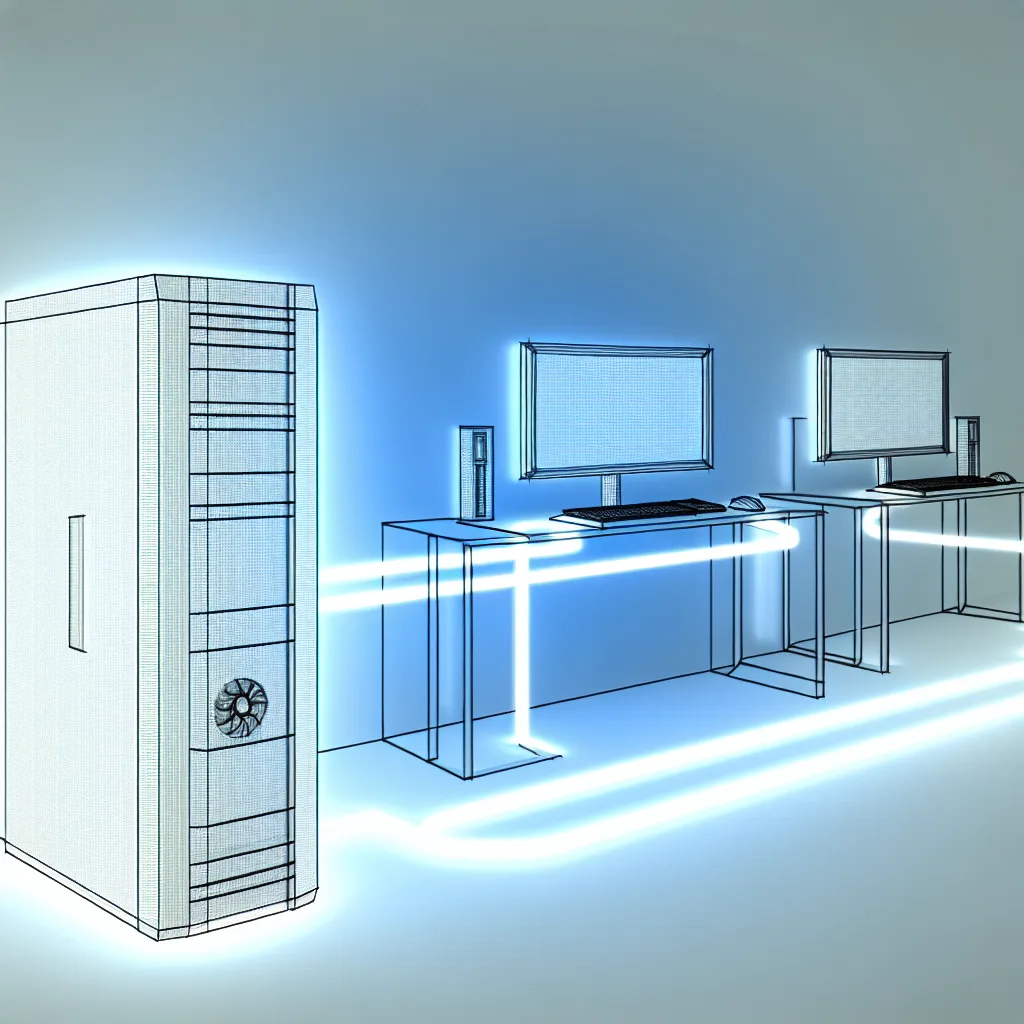How I discovered a surprisingly simple Windows multiseat setup to give my family extra ‘computers’ without buying new hardware.
Have you ever wished you had an extra computer lying around? Maybe for the kids to do their homework, for a partner to browse the web, or just for you to run a separate project without bogging down your main machine. The usual answer is to buy another laptop or PC, but that costs money and takes up space. Recently, I stumbled upon a fascinating project that offers a different solution: a clever Windows multiseat setup that turns one powerful PC into several independent workstations.
The idea sounds complex, but it’s surprisingly straightforward. You have one host computer, and multiple people can use it at the same time, each with their own monitor, keyboard, and session, as if they were on separate machines. It’s like having several virtual PCs running on a single box. I found a brilliant little script that automates the entire process, making it accessible even if you’re not a systems administrator.
So, What Exactly is a Windows Multiseat Setup?
At its core, a multiseat setup leverages technology that’s already built into Windows: Remote Desktop Protocol (RDP). You’ve likely heard of RDP for connecting to a computer remotely over a network. This method uses that same technology but in a slightly different way. Instead of connecting from across the internet, you’re creating multiple local user sessions on the same machine.
Normally, Windows only allows one active user session at a time. If you switch users, the other person’s session is locked. This script cleverly works around that limitation. It creates separate user accounts and then generates a unique .rdp file for each one. Anyone can then use that file to log into their own dedicated session from another device on your home network, like an old laptop, a cheap mini-PC, or a thin client.
The result? Your powerful desktop in the office can be humming along, while someone in the living room is using it for web browsing on a Chromebook, and another person is typing up a document on an old laptop in the kitchen—all at the same time. For a more technical look at the underlying tech, you can check out Microsoft’s official documentation on RDP.
How This Simple Windows Multiseat Setup Works
What I loved about this approach was its simplicity. In the past, setting something like this up involved manually editing system files, which is always a bit nerve-wracking. This solution, based on a PowerShell script, handles all the heavy lifting.
Here’s the basic flow:
- Run the Script: You start by running the script on your host PC.
- Create Users: It provides a simple menu to create new Windows user accounts. You just type in a username and password, and it sets everything up in the background.
- Generate Connection Files: For each user, the script creates a pre-configured
.rdpfile. This is the magic key. You can save this file on a network drive or email it to the user. - Connect and Go: The user just has to double-click that file from their device (a laptop, tablet, etc.) to open a connection to their personal desktop environment on the host PC.
It even includes a handy “Fix RDP” option to automatically adjust system settings to allow these simultaneous connections.
Who is This For? (And What Are the Catches?)
This isn’t a perfect solution for everyone, but it’s incredibly useful for specific situations:
- Families: A single family desktop can serve as a homework station for two kids and a browsing machine for a parent, all at once.
- Home Labs: If you’re a tech enthusiast, you can create isolated user environments to test software or learn new skills without needing multiple physical machines.
- Saving Money: It’s a great way to repurpose old, slow laptops. As long as the device can run a remote desktop client, it can tap into the power of your main PC.
But, there are a few things to keep in mind. First, the performance of your Windows multiseat setup depends entirely on your host computer’s hardware. You’ll want a solid processor and, most importantly, plenty of RAM. The more users you have, the more RAM you’ll need (think 16GB at a minimum, with 32GB being a much safer bet for 2-3 users).
Second, this is not for gaming. Everyone is sharing a single graphics card, and RDP isn’t designed for high-performance graphics anyway. This is best for productivity tasks, browsing, and general computing.
Finally, it’s a good idea to be mindful of software licensing. While you are using built-in Windows features, using one copy of Windows for multiple simultaneous interactive users can be a grey area. It’s always wise to review the Microsoft Services Agreement to ensure you’re comfortable with the terms.
For me, this was a fantastic discovery. It’s a practical, low-cost way to get more out of the hardware you already own. It’s a testament to the power of simple scripts and the flexibility hidden just beneath the surface of Windows.
